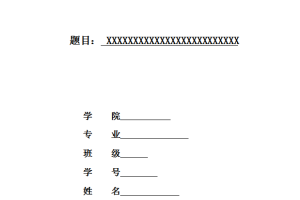竞业禁止协议,是企业约束员工、旨在保护商业秘密的一种行之有效的手段。当前,竞业禁止协议已成为企业与员工签订的必不可少的合同文件。但是由于相关法律和政策规定不完善,许多企业在签订和履行竞业禁止条款时缺乏规范性,导致合同被确认无效或被撤销,给企业造成严重损失。另一方面,显失公平的竞业禁止条款也会侵害劳动者的合法权益。因此,学术界和理论界对这一问题都给予高度关注。本文以保护商业秘密为出发点,综合运用管理学和法学的相关知识,研究如何合理有效的规范竞业禁止责任,达到既切实保护商业秘密又兼顾多方利益公平的效果。
关键词:竞业禁止;保护商业秘密;有效机制
ABSTRACT
Competition restriction is constraint of employees, and an effective means aimed at protecting commercial secrets. Currently, competition restriction has become essential for enterprises and employees to sign the contract. However, the relevant laws and policies are not perfect, many businesses lack standardization when signing and carrying out the terms of prohibition, which cause the contract to be recognized invalid or revoked, and bring serious losses to the enterprise. On the other hand, unfair provision of competiton restriction endangers the legitimate rights of workers. Therefore, academic and theoretical circles are highly concerned about this issue. To protect the trade secrets of this article as a starting point, this paper uses management and law-related knowledge integratedly, and studies how to regulate prohibition and responsibility reasonably and effectively, to protect business secrets and balance the effect of multi-stakeholder fair.
Key words: competiton restriction ; Protection of commercial secrets; effective mechanism
BRIEF CONTENTS
CHAPTER 1 Overview on Prohibition of Obligations………………………………………………………..1
1.2 Classification of Obligations.…………………………………………………………….…3
1.3 Effect of Obligations of Prohibition on Enterprises…………………………………………4
CHAPTER 2 Overview of the Obligation to Protect the Trade Secrets of Prohibition…………………………………………………………………………………………………………………………………….6
2.1 Overview of Trade secrets.…………………………………………………………………………………………………..6
2.2 Action Pattern of Employees Against the Trade Secrets……………………………………8
2.3 Obligation of Employee to Protect the Trade Secrets Prohibition.……………………………………..8
CHAPTER 3 Standardization of Obligations of Prohibition in the Protection of Business Secrets…………………..…………………………………………………11
3.1 Problems in Practice.…………………………………………………………………………………………………………….11
3.2 Perfection from the Policy Level…………………………………………………..…………12 3.3 Perfection from Enterprise Management Level…………………………………………………..….………………..13
3.4 Code of Conduct of Staff…………………………………………………………………….15
REFERENCE.……………….;…………………………………………………………………………………………………………..17
ACKNOWLEDGEMENTS.……………………………………………………………………………………………………..18





